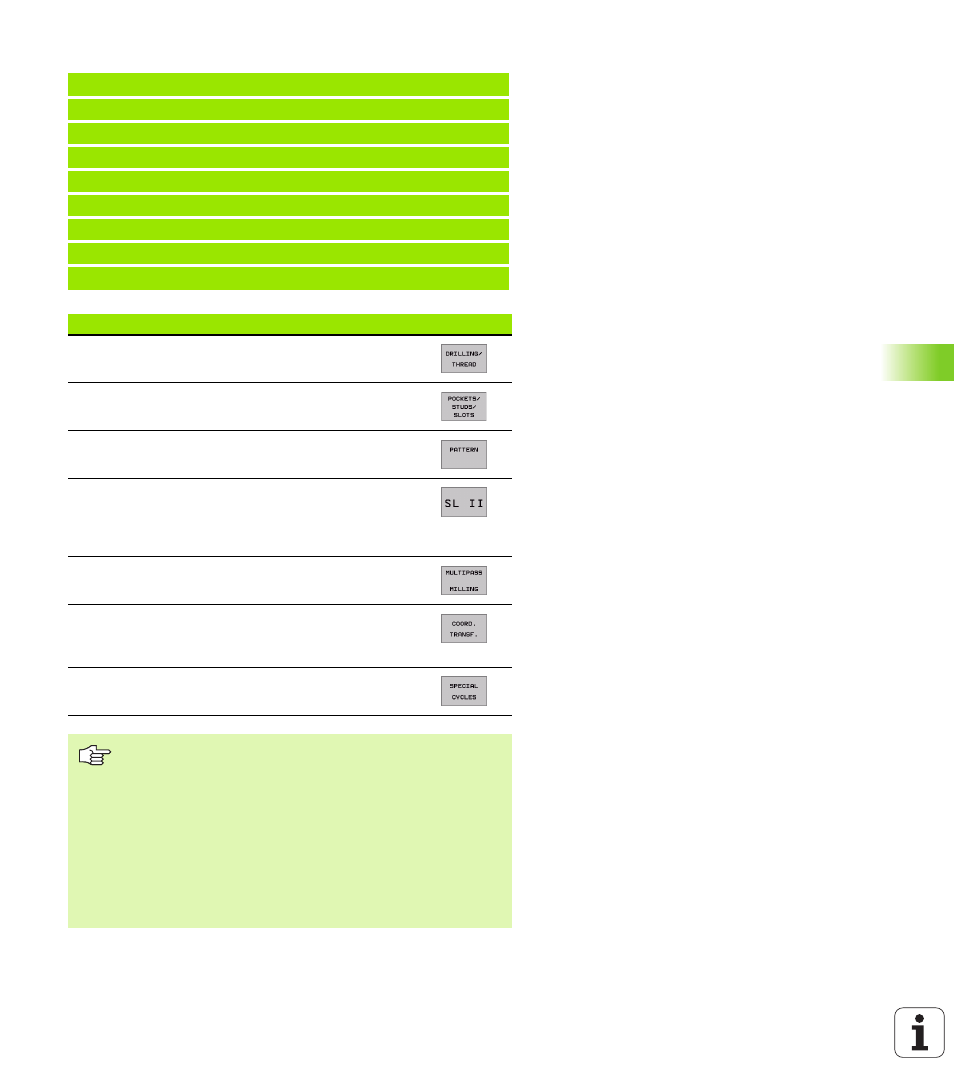1 w o rk ing with cy cles – HEIDENHAIN iTNC 530 (340 420) User Manual
Page 237

HEIDENHAIN iTNC 530
209
8.1 W
o
rk
ing with Cy
cles
Example NC blocks
7 CYCL DEF 200 DRILLING
Q200=2
;SAFETY CLEARANCE
Q201=3
;DEPTH
Q206=150
;FEED RATE FOR PLUNGING
Q202=5
;INFEED DEPTH
Q210=0
;DWELL TIME AT TOP
Q203=+0
;SURFACE COORDINATE
Q204=50
;2ND SAFETY CLEARANCE
Q211=0.25
;DWELL TIME AT DEPTH
Cycles for pecking, reaming, boring, counterboring,
tapping and thread cutting
Cycles for milling pockets, studs and slots
Cycles for producing hole patterns, such as circular or
linear patterns
Cycles for face milling of flat or twisted surfaces
Special cycles such as dwell time, program call,
oriented spindle stop and tolerance
If you use indirect parameter assignments in fixed cycles
with numbers greater than 200 (e.g. Q210 = Q1), any
change in the assigned parameter (e.g. Q1) will have no
effect after the cycle definition. Define the cycle
parameter (e.g. Q210) directly in such cases.
In order to be able to run Cycles 1 to 17 on older TNC
models, you must program an additional negative sign
before the values for safety clearance and plunging depth.
If you want to delete a block that is part of a cycle, the TNC
asks you whether you want to delete the whole cycle.
